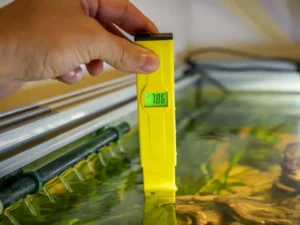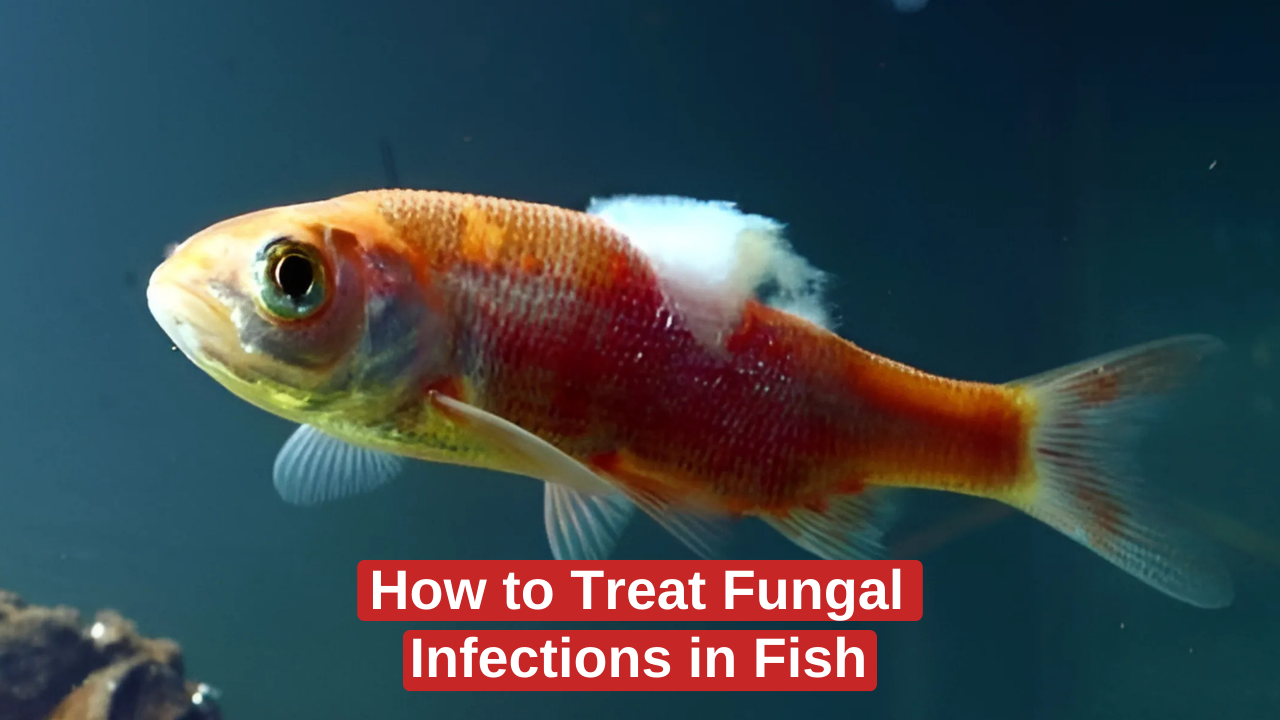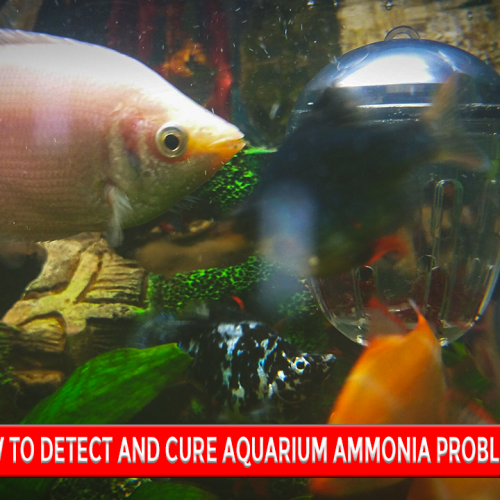In fact, most aquarium fish suffer from fungal infections. Left untreated, these infections can bring significant health problems to the fish. Most of them will look like cotton wool growths on the skin, fins, and gill covers of the infected fish. They cause as a response to low water quality, which may or may not be stressed, injured, or anything else. Proper treatment and preventive measures would help completely cure the existing fungal infection and minimize its recurrence. The guide discusses the symptoms, causes, treatments, and prevention strategies for fungal infections in fish.
What Are Fungal Infections in Fish?
The most common of these are Saprolegnia and Achlya. Fungal infections in fish are caused by several species, and most of these fungi are opportunistic pathogens, meaning they primarily infect stressed, injured, or otherwise debilitated fish. Fungal spores are always present in aquatic environments but typically have no effect on fish unless their immune system has been weakened by a variety of factors.
Symptoms of Fungal Infections
The fact that it will treat fungal infections even early, knowing that symptoms occur is a great boost. The most common signs of having a fungal infection on fish include the following:
- Cotton-Like Growths: White or light grayish cotton tufts appear on the skin, fins, gills, or mouth, appearing fuzzy or fluffy.
- Reddened or Inflamed Areas: The surrounding area of the infection on the skin inflames or reddens.
- Lethargy: I Infected fish becomes less active as compared to their previous state, refuses food, or tends to hide often.
- Loss of Color: The fish might appear pale or lack brilliance, indicating that they are stressed or not healthy.
- Fin Deterioration: The fins could become tattered or frayed if the fungus reaches it.
Causes of Fungal Infections.
Causes of Fungal Infections
Several factors can contribute to the development of fungal infections in fish:
- Poor Water Quality: There are high levels of ammonia, nitrites, or nitrates; stressing the fish and they eventually become an easy target for fungus infection. Clean water must always be preserved in fish tanks.
- Injuries or Wounds: Among the most obvious of physical injuries, nipping by tank mates or abrasion resulting from sharp decorations are welcomed portals for fungi to enter.
- Stress: Whenever there’s a drastic change in water temperature, overcrowding or the lack of adequate hiding places, the fish’s immune system may be compromised.
- Other Illnesses: Even if already infected with other diseases such as bacterial infections or parasites, the secondary development of fungal diseases may now become feasible.
How to Treat Fungal Infections
Effective treatment of fungal infections involves isolation of the infected fish, dealing with the cause itself, and medicating appropriately. Here is a step-by-step treatment guide on fungal infections in fish:
1. Isolate the Infected Fish
- Quarantine Tank: Place the diseased fish in an isolation quarantine tank so you would not infect those other fish of the main tank. The tank should have a filtration and heating but not have substrate and any ornamentations that could provide its hospitable environment with a means of hiding.
2. Improve Water Quality
 Perform Water Changes: Go ahead and carry out regular water changes of 25-30% in both main and quarantine tanks to remove toxic substances and ensure the aquatic parameters are within their optimal range.
Perform Water Changes: Go ahead and carry out regular water changes of 25-30% in both main and quarantine tanks to remove toxic substances and ensure the aquatic parameters are within their optimal range.- Test Water Parameters: Use a water test kit to check if ammonia, nitrite, and nitrate parameters are within proper acceptable limits for the fish, i.e., ammonia and nitrates at 0 ppm and nitrates lower than 20 ppm. Carry out stable water temperature for the fish.
3. Use Antifungal Medications
 There are many antifungal medications for fungal infections in fish. These may be added to a quarantine tank or used as a bath treatment:
There are many antifungal medications for fungal infections in fish. These may be added to a quarantine tank or used as a bath treatment:
- Commercial Antifungal Medications: Those including malachite green, methylene blue, or formalin are effective against fungal infections. Just make sure you follow the instructions precisely to avoid overdosing.
- Salt Baths: Addition of 1 tablespoon of aquarium salt per 5 gallons to the quarantine tank may inhibit fungal growth and aid healing. Ensure that the species of fish involved can tolerate salt.
- Methylene Blue Baths: Methylene blue is a dye that might be able to kill fungi on the body surface of the fish. This is most often applied in a separate treatment container, rather than the quarantine tank proper.
4. Remove Infected Tissue (If Necessary)
- Consult an Expert: When the infection had strongly taken its roots in the skin or fins, debridement of the infected tissue is warranted. This must only be attempted by an experienced aquarist or veterinarian since this is a stressful process for the fish.
Preventing Fungal Infections
Prevention of fungal infections basically has to do with preserving a clean environment and minimizing stress factors. One can achieve this through the following:
1. Maintain High Water Quality
- Regular Water Changes: 20-30% of the water change every week will keep the tank clean and decrease toxic and waste materials in the tank.
- Use a Quality Filter: Ensure that the aquarium has a proper-sized filter for the tank. The filter must contain both mechanical and biological components for maintaining the healthy nitrogen cycle.
- Monitor Water Parameters: Monitor ammonia, nitrite, nitrate, and pH. Modify them accordingly to keep the parameters well balanced.
2. Avoid Overcrowding
- Stock the Tank Properly: Do not overcrowd the aquarium. Overstocking leads to increased levels of waste, poor water quality, and more stress for the fish.
- Provide Enough Space: Different species of fish have different requirements. Provide enough space in order to give your fish adequate space for swimming.
3. Minimize Stress
- Maintain Stable Temperature: Avoid fluctuating the water temperature. Provide an aquarium heater and use a thermometer to help you maintain the stability of the water temperature.
- Provide Hiding Spots: Add decorations, plants, or caves to create hiding spots for your fish to ensure them a feeling of security.
- Avoid Aggressive Tank Mates: Some species of fish tend to be aggressive or territorial. Choose suitable tankmates that will not harm each other.
4. Quarantine New Fish and Plants
- Quarantine Procedures: The new fish, plants, or decorations must be quarantined for at least 2-4 weeks before they come to the main tank. This way, you’ll avoid the spread of disease and parasites around the aquarium.
- Inspect for Signs of Illness: Prior to introducing new additions into the main tank, inspect them for fungus, parasites, and other forms of illness.
5. Prevent Physical Injuries
- Avoid Sharp Decorations: To minimize the injury of fish, choose smooth edges decorations.
- Provide a Safe Environment: Objects in the tank must not cause injury by possibly rough rocks or potentially sharp plants.
Conclusion
Treating and preventing fungal infections in fish requires a harmonious balance of good quality water, proper quarantine procedures, and immediate treatment at signs of infection. Once these guidelines are followed, the aquatic pets will have a healthy condition free from fungal infections among other diseases. Maintenance, monitoring, and care in a routine basis ensure that fish stay bubbly, healthy, and free from infections.
FAQs (frequently-asked questions)
Fungal infections per se are not contagious, although whatever has caused them – bad water quality or injury – is likely to have some sort of effect on more than one fish in the tank.
Although the whole tank can be treated, it would be a much better move to isolate the infected fish in a quarantine tank. That way you will avoid stressing the rest of the healthy fish.
Giving multiplicity of drugs is dangerous to animals. Consult a veterinarian or expert before mixing treatment because the combination of some medications could have unwanted reactions.




